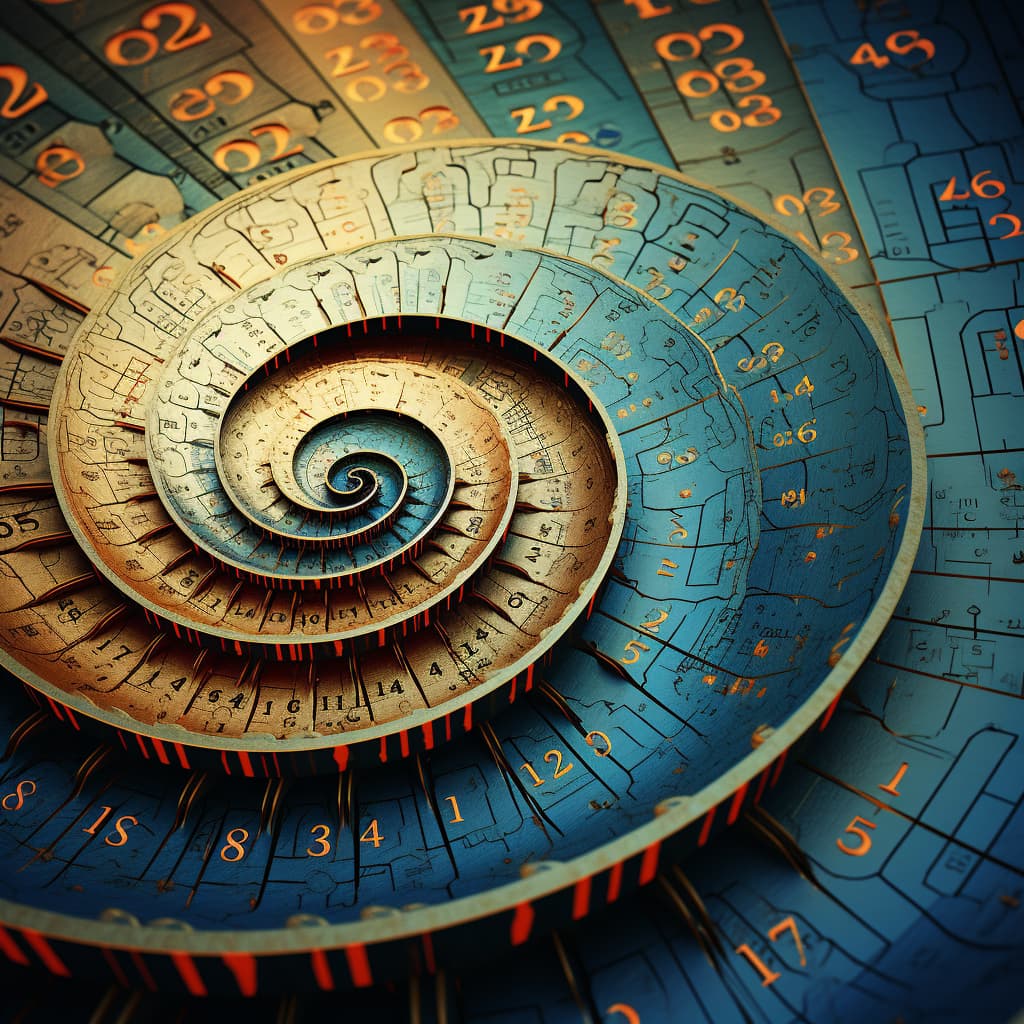AI generated content
This content is generated by an AI and does not reflect the opinions or views of individuals, either living or deceased.
| Text generated by | ChatGPT (GPT-4) |
| Text prompt | Write an intriguing blog post about the magical Fibonacci numbers. |
| Image generated by | Midjourney |
| Image prompt | Fibonacci numbers |
The Magic of Fibonacci: A Deep Dive into the Universe's Secret Code

If you've ever twirled a sunflower in your hand, noticed the spiral patterns in a pinecone, or simply appreciated the artistic beauty of a nautilus shell, then you've encountered the magic of Fibonacci numbers. This seemingly mysterious sequence is far more than a list of numbers - it's a key that unlocks a myriad of natural and man-made patterns, from the petals of flowers to the architecture of the cosmos.
Who was Fibonacci?
Before we delve into the mystical depths of Fibonacci numbers, let's meet their namesake. Leonardo of Pisa, also known as Fibonacci, was an Italian mathematician born in the late 12th century. Despite his numerous contributions to mathematics, he is most famously known for introducing the Fibonacci sequence to the Western world in his 1202 book, "Liber Abaci". However, the sequence had been described by Indian mathematicians centuries earlier.
What are Fibonacci Numbers?
The Fibonacci sequence is a series of numbers in which each number is the sum of the two preceding ones, usually starting with 0 and 1. It looks something like this:
0, 1, 1, 2, 3, 5, 8, 13, 21, 34, ...
From this series of numbers, a fascinating pattern unfolds, where the ratio of two successive Fibonacci numbers approximates the "Golden Ratio" (approximately 1.61803398875), a mathematical constant that has held sway over artists, architects, and scientists throughout the centuries.
Fibonacci in Nature
Perhaps the most enchanting application of Fibonacci numbers is found in the natural world. You will find them in the petal arrangement of flowers, the seed heads of sunflowers, and the family tree of honeybees, to name a few examples.
The sunflower is a striking example. If you examine its seed head, you will find two sets of spirals, one winding clockwise and the other counterclockwise. Intriguingly, these counts are often successive Fibonacci numbers. This is not an arbitrary pattern; this arrangement allows the sunflower to pack in the maximum number of seeds, utilizing space most efficiently, a principle nature holds dear.
Fibonacci and the Golden Spiral
Fibonacci's mysterious touch is not only limited to the biological world. It extends to the realm of art, architecture, and even the cosmos. When Fibonacci numbers are used to create squares and those squares are assembled in a specific way, a spiral forms. This 'Golden Spiral' appears in various aspects of human culture, from the architectural design of the Parthenon to the composition of Mona Lisa's face, and even in galaxies.
The Golden Spiral is deemed aesthetically pleasing, and it is often used in art and design due to its visually harmonious properties. It's as if our human brains are somehow wired to recognize and appreciate the presence of this mathematical phenomenon.
The Magic of Fibonacci Numbers
The magic of Fibonacci numbers lies in their universal applicability, their inherent beauty, and their foundational role in understanding the patterns of life and the universe. These numbers present an intriguing glimpse into the mathematical language of nature, and how patterns repeat themselves in surprising ways, from the microcosm of a flower to the macrocosm of a galaxy.
Whether or not Fibonacci knew the far-reaching implications of his sequence is up for debate, but there's no denying that his mathematical legacy offers us a profound connection between numbers, nature, and art. So the next time you admire a flower or gaze at a spiral galaxy, remember you're not just looking at natural beauty, you're seeing the universal magic of Fibonacci numbers.
